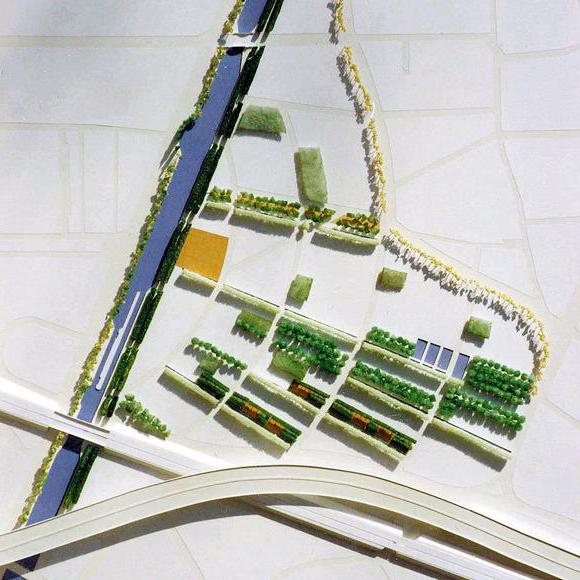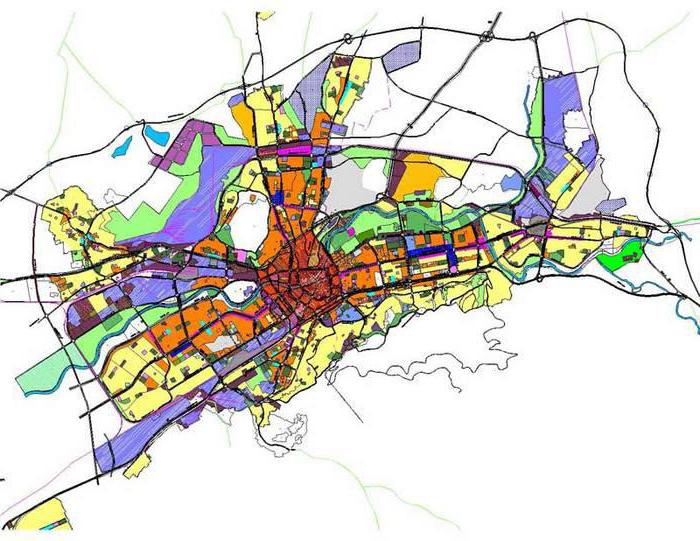The town-planning regulation establishes the legal regime for the allotted plots, for everything that is above and below their surfaces and is used for the development and subsequent operation of capital construction objects. When creating it, a number of conditions are taken into account. Let us further consider what constitutes urban planning regulations. 
Conditions
Town planning regulations are formed taking into account:
- The actual operation of allotments and capital construction projects.
- Opportunities to combine within the boundaries of one zone different types of planned and existing use of the territory and structures.
- The functional parts of the terrain and the characteristics of their proposed development, which are defined in the documents of the Ministry of Defense.
- Of types territorial zones.
- Legislative requirements for the protection of cultural, historical and other protected objects.
Regulations
The legislation defines zones of urban planning regulations. The standards apply to all plots and capital construction projects that are located within the area indicated on the corresponding map. The town-planning regulations of the territorial zone do not cover:
- Areas in which ensembles and monuments related to objects of cultural and historical heritage peoples of the Russian Federation, including newly identified, decisions on the parameters of restoration, reconstruction, conservation, adaptation, repair, the content of which are approved in the manner prescribed by relevant legislative documents.
- Public areas.
- Locations of linear features.
In addition, the administrative regulation of the urban development plan does not apply to:
- Forest and water funds.
- The territory of the stock.
- Agricultural grounds.
- Specially Protected Areas. An exception is the land of resorts and health areas.
Special cases
The rules of land use and development (urban planning regulations) for historical settlements, recreational, therapeutic, attractions and resort places with special operating conditions are determined by the legislation of the Russian Federation. Authorized entities in these cases are state, regional or local authorities. Allotments or objects of capital construction, permitted use, the limiting parameters and sizes of which differ from those specified in the provisions of the regulations, can be exploited without determining the timing for bringing them into compliance. An exception is when it can be dangerous to the health or life of people, the environment or cultural sites.
Reconstruction
For capital construction facilities indicated in the previous paragraph, such a procedure can be carried out only after bringing them in line with the provisions or reducing the discrepancy. Subject to change type of permitted use sections that differ from the parameters defined in the regulation. This is done solely by bringing the indicated allotments in line with the provisions of the normative document. If the operation of sites and facilities continues and poses a threat to the life / health of the population, negatively affects the environment and cultural monuments, their further use may be prohibited according to the current legislation. 
Classification
The following types of urban planning regulations exist:
- Target.Such regulatory documents list all the options for the permissible operation of the terrain, which proceed from the functional purpose of a particular part. It, in turn, is determined in accordance with the current situation or the general plan. Typically, these settings are the same. It follows from this that on a terrain of the same type one urban planning regulation applies. Thus, the same rules apply to a land plot located, for example, in one part of a settlement, and to an allotment located in another part thereof. Operation options refer to ideal conditions in such a document. It is understood that the territorial zone is exempted from any restrictions. In fact, any locality is influenced by one or more factors that establish certain limits of urban development.
- Restrictive. Such urban planning regulation acts as an addition to the target regulatory documents. They are caused by restrictions of anthropogenic and natural character. Such regulations are tied to specific locations.
The restrictive documents define 2 degrees of permission to operate:
- Forbidden unconditionally.
- Allowed subject to a set of measures aimed at neutralizing the effects of restrictions, or compliance with a number of requirements.
Land Use and Development Rules
Town-planning regulations are their integral element. In addition to him, they also include:
- The procedure in accordance with which it is allowed to make changes and apply the provisions.
- Zoning map.
Regulatory procedure is necessary for:
- Formation of conditions to ensure the sustainable development of the municipality, the preservation of cultural and historical objects and the environment.
- Protection of legal interests and rights of legal entities and individuals, including rightholders of capital construction objects and allotments.
- Formation of conditions for the planning of the territory of Moscow Region.
- Strengthening investment attractiveness, including by providing the opportunity to choose the most suitable options for operating allotments and capital construction projects.

Key Points
Town-planning regulations for land use and development contain information on:
- Holding a public hearing.
- Preparation of documents for planning the area by the territorial authorities.
- The order of regulation of development and land use by municipal government structures.
- Amendments to regulatory enactments.
- Regulation of other industry issues.
Map
On the scheme of urban zoning, the boundaries of the territorial zones are determined. They must meet the requirements of belonging to each allotment of a particular area. The formation of one site from several located in different zones is not allowed. The map necessarily shows the boundaries of localities with a special order of their operation, as well as areas where cultural and historical objects are located.
Division of the terrain
In the process of urban zoning, the following zones can be distinguished:
- Residential.
- Production.
- Social and business.
- Transport and infrastructure.
- Agricultural purpose.
- Protected Areas.
- Special purpose.
- Placement of military infrastructure facilities and so on.

Housing estates
They may include zones:
- IZHS.
- Low-rise houses.
- Mid-rise buildings.
- High-rise buildings and other types.
In residential areas, it is allowed to place attached, built-in or standing separately objects:
- communal or social purpose;
- health care;
- education (DOE, school);
- cult destination;
- for transport, including garages;
- associated with the living of people and not negatively affecting the environment.
Public and business space
It may include zones:
- Commercial, public, office use.
- Placement of objects of municipal or social sphere.
- Maintenance of facilities required for business and industrial activities, etc.
The public and business zone is designed to accommodate various facilities related to the provision of vital functions of the population. The list of structures that may be located in it may include hotels, residential buildings, multi-storey and underground garages.
Production and engineering transport areas
They may contain zones:
- Placement of warehouse and communal facilities, utilities, transport and wholesale.
- Locations of production facilities with different environmental standards and more.
When placing objects within the specified territories, the boundaries of sanitary protection zones should be determined in accordance with the requirements of technical regulations. 
Agricultural areas
They may include zones:
- Agricultural land. These include arable land, deposits, pastures, hayfields, territories occupied by perennial crops (vineyards, orchards, etc.).
- On which agricultural facilities are located and intended for agricultural activities, horticulture, gardening, private household plots and so on.
As a rule, such areas are located outside settlements. This is due to their large area, as well as the specifics of the activities carried out within their borders. However, such zones may be included in the territories located within settlements. In this case, as a rule, they do not occupy large areas. And agricultural activities are carried out with some restrictions and are not large scale. This, in particular, is about small gardens, kitchen gardens, vineyards and so on.
Other areas
Composed of recreational areas may be present areas occupied by squares, city forests, parks, gardens, lakes, ponds, reservoirs, beaches. These also include areas intended for tourism, recreation, physical education and sports. Moreover, the latter may be located within the boundaries of other territories. Specially protected areas may include areas of special scientific, environmental, aesthetic, historical and cultural, recreational, recreational or other valuable value. Special territories include cattle cemeteries, crematoriums, cemeteries, landfills and other objects, the placement of which is not allowed in other places. In addition to the specified spatial division, local authorities can define other categories. When zoning, the functional purpose, the specifics of the use of capital construction objects and plots are taken into account. This procedure is of key practical importance in the allocation of allotments on the ground.

Regulation: urban development plan of the land
GPZU is a specialized document that performs an information function. It provides information on all the characteristics of the plot intended for development. In addition, the document includes all the restrictions provided for this allotment. Reproduction of the available information is the main task that the urban development plan fulfills. The regulation formulates regulations, parameters, etc., and the GPZU reflects them in relation to a specific allotment.
Appointment
GPZU is required for:
- Creation of design documentation for the reconstruction or construction of a capital construction facility.
- Obtaining permission for the construction of the building.
- Issuance of a document for commissioning a building.
In the latter case, the exceptions are the objects of individual housing construction provided for in the Federal Law No. 20.
Structure
The urban development plan of the land should indicate:
- Borders put on.
- The limits of the zones of operation of easements (public).
- Minimum distance from allotment boundaries. Such indentation is necessary to determine places beyond which the placement of structures and buildings is not allowed.
- Information about the acceptable type of use of the site.
- Requirements for the parameters, purpose, location of the object in this allotment. This information is indicated if the urban planning regulation does not apply to the land plot.
- Information about allotted cultural and historical objects and other structures.
- Information about the technical conditions for connecting structures to engineering and communication systems.
- The boundaries of the territory of the proposed location of capital construction facilities for municipal / state needs.
- Information about the possibility / impossibility to divide the allotment.
If an object is subject to urban planning regulations, the GPZU must contain information about it. 
The procedure for the preparation and issuance of the GPZU
The formation of the plan is carried out as part of a boundary project or as a separate document. Preparation and issuance is carried out at the request of the user, owner or other interested person. The formation or provision of the GPZU acts as the duty of an employee of the authorized body. In this case, the goals of the request do not matter. The collection of any documents is not carried out, except for those that identify the identity of the applicant. When an interested person applies to the authorized body for GPZU public hearings not carried out. The competent authority shall, within 30 days from the date of receipt of the request, prepare and approve the GPZU. The plan is provided to the applicant free of charge.








